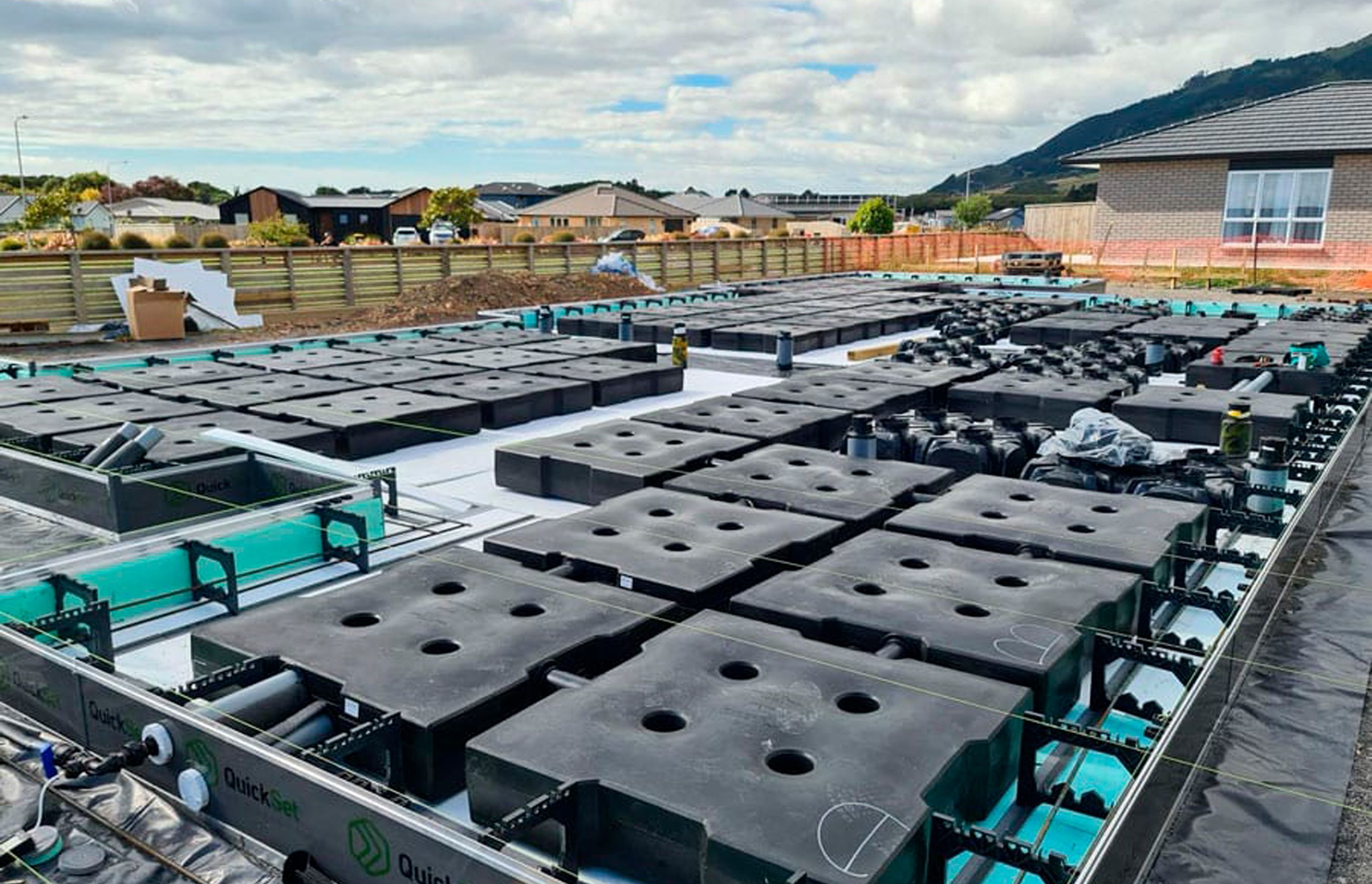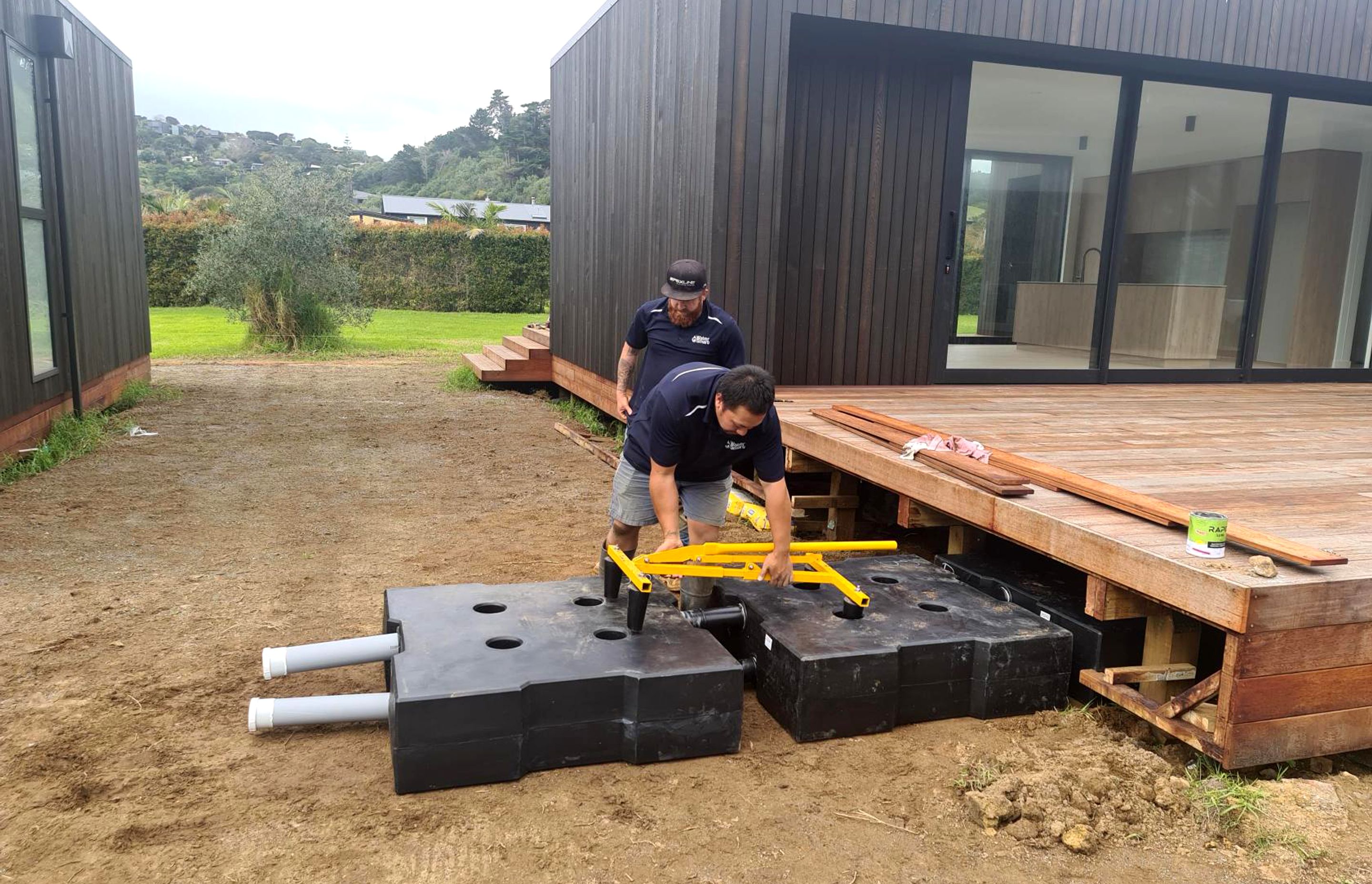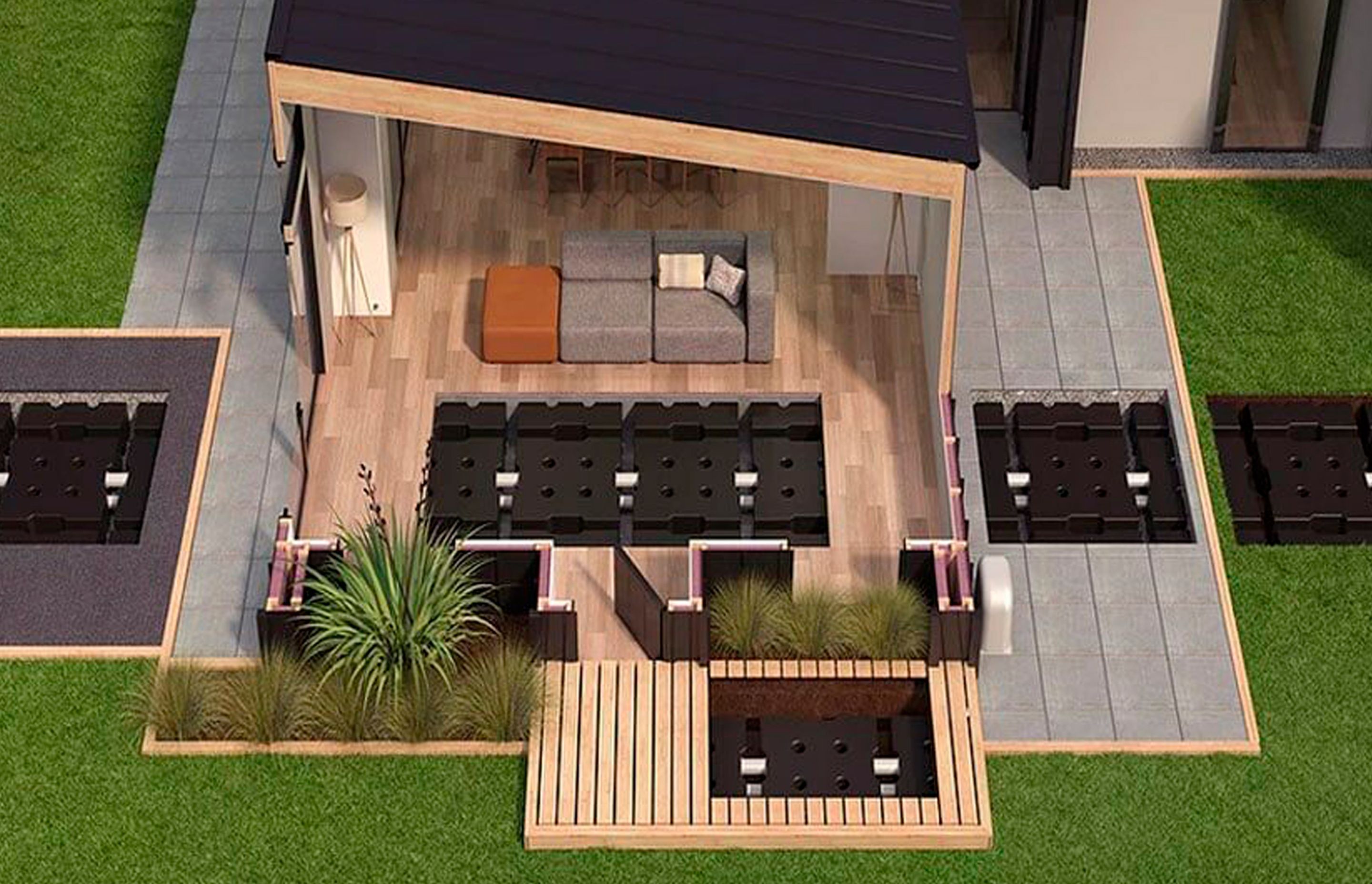Reuse, detention, and recycling: the key to stormwater attenuation
Written by
01 April 2023
•
3 min read

Stormwater attenuation is a trending topic at the moment, for good reason. With the increase in high-density housing and commercial developments in Auckland, areas of permeable ground cover have significantly reduced, leaving excess water with nowhere to go. And, after a summer punctuated by record rainfall, flooding, and cyclones, the need for efficient water management is apparent.
“The reality is that we have to adapt. We’ll never be able to build pipes big enough to account for the amount of stormwater we’re dealing with now, and will be dealing with in the future, so we have to be clever about how we design,” says Stormwater Systems’ Co-Founder and Managing Director, Andrew Olsen.

Olsen founded Stormwater Systems with his son Elliot Olsen in 2017, with the intention to provide innovative and comprehensive solutions for the stormwater challenges faced in the development and construction industry, and offer a sustainable way to manage and recycle water.
Now, over five years later, the business offers a variety of stormwater attenuation and water recycling solutions that can be installed during the building process, or retrofitted in existing structures.
There are three facets to stormwater management that Stormwater Systems look to address: water reuse, water detention, and water recycling.

Water reuse
Water reuse is a process where rainwater is collected off roofs and other hard surfaces, and then stored in a tank. The water can then be used for non-potable purposes in a new build — like toilet flushing, laundry, and outside taps — and for external use when retrofitted.
Water detention
Through the same process as water reuse, rainwater is collected and stored in a detention tank where it is slowly released back into the city’s stormwater pipes, reducing the load on the city’s infrastructure.
The Stormwater Systems’ Aquacomb tanks are a modular solution designed specifically for this purpose. The system consists of a series of pods that can be installed in the home’s floor slab, under a deck, buried in the backyard, or under the driveway. Due to its modular nature, the system can be expanded as more capacity is needed.

Water recycling
These systems can also be designed to recycle water through a filter so it can be used in the home.
“We have a new product that has arrived from Holland called Hydraloop, which is a water recycling system. Hydraloop diverts what would normally go down the drains from a shower, bath, and washing machine, collects that water, cleans it and then uses it to feed the toilet, the laundry, and the outside taps,” Olsen explains.
“On its own, it results in about a 45% saving in your potable water usage, and a 45% reduction in the amount of water that goes into the public system. Combine that with rainwater retention and you’re looking at around 70-80% in savings.”
Olsen says this is great for both your water bills, and disaster control. “You won’t need to have the taps turned off during the next drought, and you'll also have extra capacity during crazy rainfall.”

Specifying Stormwater Systems
Whether you’re working on a new build, or you’re looking for a solution to retrofit, the Stormwater Systems team provides expert advice — consulting with architects, engineers, and specificers to determine the best solution for each site.
“The earlier we’re involved in the process, the better,” Olsen says. “Our team can provide a lot of value around the engineering of the water detention, reuse, and recycling systems, and help with assessments at the front end — often lowering the cost.”
Learn more about Stormwater Systems.